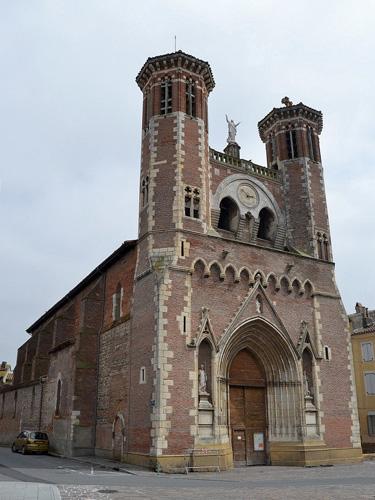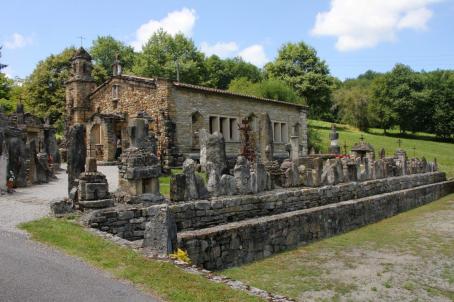Church of Notre-Dame-de-l'Assomption

Originally a small Gallo-Roman village built on the promontory of Montjoie and bordered by the Hourride and the Garonne, Cazères appears in history in medieval times. A first church was then erected there. Dependent successively on the house of Comminges then on the county of Toulouse, Cazères is in the 14th century under the house of Foix then directed by Gaston Phoebus. During this period, the town suffered unrest and wars that ravaged their region. Thus in 1355 the primitive church was destroyed by the English troops of the Black Prince. At the end of the 14th century, the construction of a new church was started, which would be named Notre-Dame and would be the patron saint of Sainte Quitterie. During the Revolution, it was mutilated and stripped of its arrows and chapels. It was not until 1888 that its façade was restored by the architect H. d'Espouy, who designed the two octagonal towers between which the Virgin of the Assumption stands.
About this building
The church is said to date back to the early 14th century and has been rebuilt several times. The portal consists of small columns with carved capitals. A pointed pointed pointed arch forms the vault, which is divided into six compartments. The vault is surmounted by a triangular pediment decorated with hooks. On either side are two niches decorated with two small columns with foliated capitals, surmounted by a triangular pediment. Inside, sculpted capitals (fantastic animals, salamanders, grimaceous heads...).




